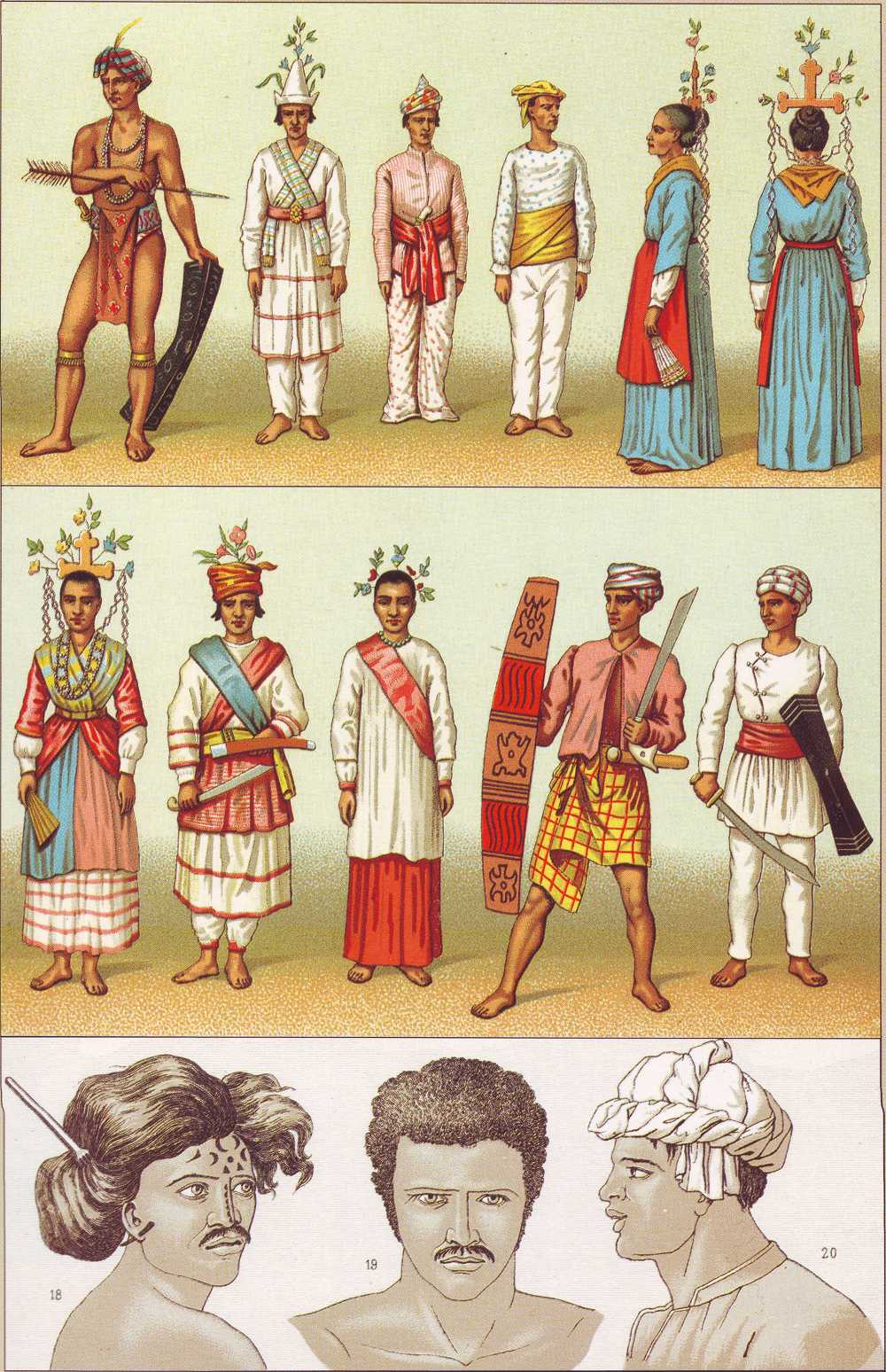
Try Amazon Audible Premium Plus and Get Up to Two Free Audiobooks
THE HISTORICAL ENCYCLOPEDIA OF COSTUME
ALBERT RACINET
THE CLASSIC WORK OF THE 19TH CENTURYp48-49

THE PEOPLES OF MALAYSIA, where a poorly turned out man invites scorn, are the best dressed in Oceania: even in the poorest, most distant islands the Malaysians never go about naked. Clothes are generally made from local products, but blue materials and cotton are also imported from the two Americas.
The principal item of the male costume is the sarong. This is made from a piece of material called a pagne, six or eight feet long by three feet wide, which is wrapped round the hips and sometimes secured with a belt. Women use pagnes, too, though in their case they are knotted at the throat and hang down to the ankles. Women's hair is usually tied up at the back of the head and fastened with a pin made of horn, buffalo or brass.All the illustrations in 1 & 2 are of natives of Gorontalo, a town on the Bay of Tomini in Celebes.
1.1 Alfour de Tondano, ruler of Gorontalo, in ceremonial dress that copies the ancient national costume. He wears an elegant loincloth of richly coloured silk. A white headscarf covers the hair, which is held up at the front by a silken headband containing the feather of a bird of paradise.
1.2 Contemporary ceremonial dress. The scarf crossing shoulders and chest is held in place by a belt; this device was used in the company of Christian women as a symbol of faith. The costume is made of cotton and the scarf of silk.
1.3 & 4 Sailors, both with cotton costumes and silk sashes. One headscarf (3) is of cotton; the other is of silk.
1.5 & 6, and 2.1 Catholic women, wearing chemises, handkerchiefs round their necks and aprons. Showing both European and Oriental influences, these are devotional garments.
1.5 & 6 show the same woman from two different angles. She wears an enormous wooden hair comb, which rises above her head in the shape of a cross. This is topped with artificial flowers from which are hung small chains of brass encrusted with shells.
2.1 This woman wears a gilded belt and carries a fan of gilded leaves; her necklace is made of glass beads.
2.2 One commentator says that "the chiefs wore either a Christian costume, which tended to give them rather a starched appearance, or a Muslim costume that suited them a great deal better."
Here the chief has adopted a Muslim style of dress, but the shoulder sashes, crossed over the chest, may indicate that the man is a Christian and perhaps the husband of the woman next to him.
2.4 A warrior dressed in a chequered Malay sarong, a short open jacket and a headscarf wrapped round the head like a turban. All these garments are made of cotton. In his left hand he carries a kern pilan, a type of sabre whose blade is wider at the tip than at the hilt. The tall narrow shield is called a salawako.
2.5 A member of the Gorontalo militia in his uniform.

3 The majority of Oceanic tribes do not cut their hair short and wear nothing on their heads. The characteristic style is shown on the left: the hair has been allowed to grow long, and is fastened at the back with a bamboo clasp; the forehead and nose are decorated with markings. Short-haired styles, with and without a headdress, are shown to the right.